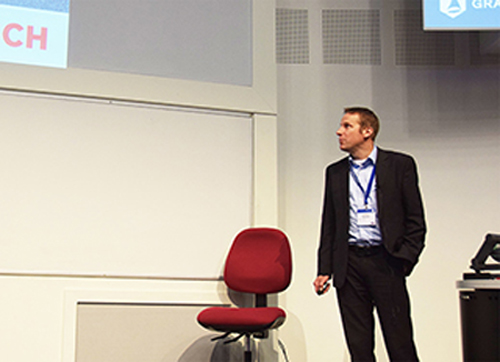
Bosch have worked with scientists at the Max-Planck Institute for Solid State Research to create a graphene-based magnetic sensor which is 100 times more sensitive than an equivalent device based on silicon.

Bosch have worked with scientists at the Max-Planck Institute for Solid State Research to create a graphene-based magnetic sensor which is 100 times more sensitive than an equivalent device based on silicon.
Bosch has long been involved in sensor technology, notably in the automotive sector. In 2008, the company expanded beyond its pressure, acceleration and gyroscopic motion sensors, to geomagnetic, temperature, humidity, air quality and sound pressure devices, including for use in consumer electronics devices such as mobile phones.
Interested in whether graphene could enable new applications and improved sensor performance, Bosch has been investigating the use of the two-dimensional material in its pressure, magnetic, humidity, gas and sound pressure devices. The first step was to look at fabrication methods.
Talking at Graphene Week 2015, Robert Roelver a researcher at Bosch, which claims to be the world's number one supplier of microelectromechanical sensors, with 1bn euros in sales,said that top-down approaches to graphene device fabrication such as mechanical and chemical exfoliation would not work on a commercial scale whihc is why Bosch has focused instead on bottom-up techniques such as the thermal decomposition of silicon carbide, and chemical vapour deposition onto metal surfaces.
Roelver cautioned that graphene-based sensor applications will require 5-10 years before they can compete with established technologies because of the current lack of large-scale wafer-based and transfer-free synthesis techniques.
Various substrates were considered by the Bosch and Max-Planck researchers, who in the case of their magnetic sensor settled on hexagonal boron nitride. This is for reasons of both cost and technical performance.
Bosch's magnetic sensors are utilize the Hall effect, in which a magnetic field induces a Lorentz force on moving electric charge carriers, leading to deflection and a measurable Hall voltage. Sensor performance is defined by two parameters: (1) sensitivity, which depends on the number of charge carriers, and (2) power consumption, which varies inversely with charge carrier mobility. The high carrier mobility that makes graphene useful in such applications.
Comparing and contrasting materials, Roelver in his Graphene Week presentation showed that the worst case graphene scenarios roughly match a silicon reference. In the best case scenario, the result is a huge improvement over silicon, with much lower source current and power requirements for a given Hall sensitivity. In short, graphene provides for a high-performance magnetic sensor with low power and footprint requirements.
Roelver centred on a direct comparison between the sensitivity of a silicon-based Hall sensor with that of the Bosch-MPI graphene device. The silicon sensor has a sensitivity of 70 volts per amp-tesla, whereas with the boron nitride and graphene device the figure is 7,000. That is a two orders of magnitude improvement.